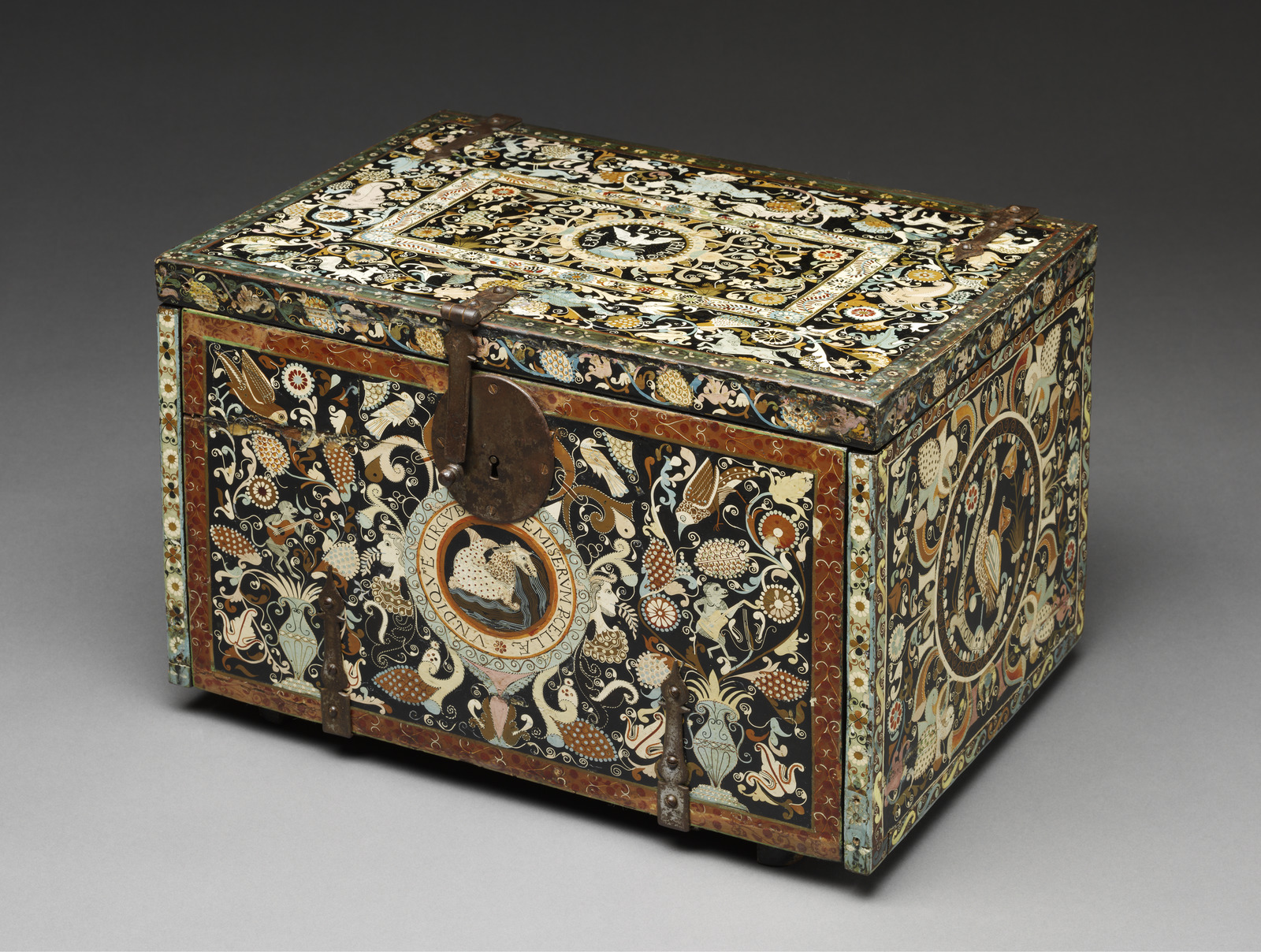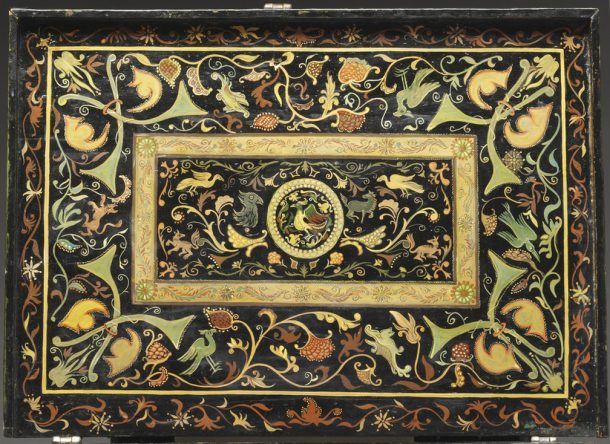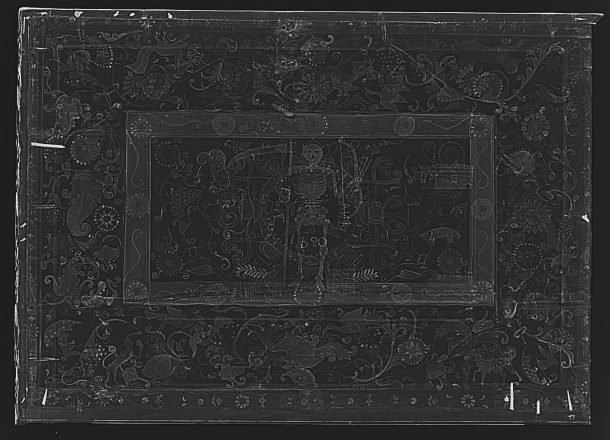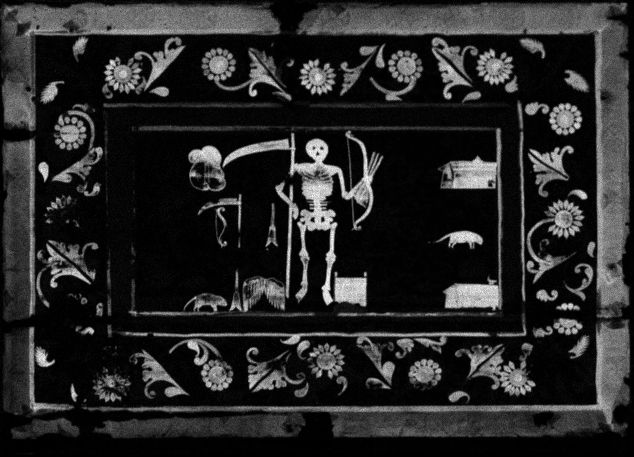Investigating the V&A barniz de Pasto table cabinet
There is a picture of Death hidden under the surface of the lid of this table cabinet!

We never would have guessed this secret when we started to investigate the newly acquired cabinet in 2015. A true skeleton in the closet – pardon me – in the casket…
The lid, like the rest of the cabinet, is decorated with images of flora and fauna, but it wasn’t until we X-rayed it that we realised something very different and more sinister lurked underneath.


The wood cabinet was made in Colombia in the mid-17th century and is decorated with barniz de Pasto lacquer. Our scientific analysis showed that, contrary to the rest of the cabinet, the entire inner surface of the lid was repainted at some point in the past century, probably to eliminate any trace of a very spooky subject!
We joined forces with the National Gallery and the Natural History Museum, and together we reconstructed what is still invisible to the naked eye.
Here is a micro-CT (computed tomography) scan of the lid showing the hidden decorative scheme:
And here is a map of the element mercury (obtained by X-ray fluorescence or XRF), which is the main component in calomel, a white pigment that was used to decorate the whole cabinet:

More on calomel and ‘mercury white’ in my next blog!
The table cabinet was given to the V&A by Dr. Robert MacLeod Coupe and Heather Coupe in memory of their brother, Philip MacLeod Coupe.
For more technical analysis, see:
Burgio et al., ‘Identification, characterisation and mapping of calomel as “mercury white”, a previously undocumented pigment from South America, and its use on a barniz de Pasto cabinet at the Victoria and Albert Museum’, Microchemical Journal, volume 143, December 2018, Pages 220–7.



While this table cabinet is beautiful as is, the discovery of the skeleton depicting Death underneath all the flora and fauna lends an additional macabre beauty to it, I think!